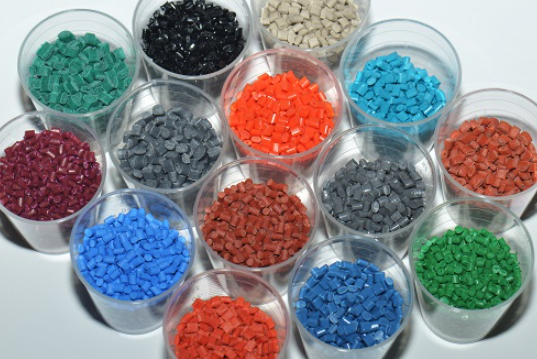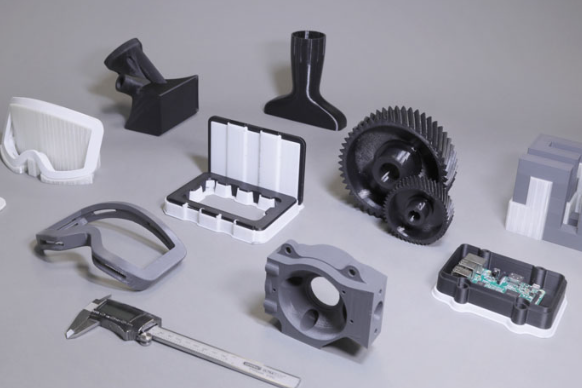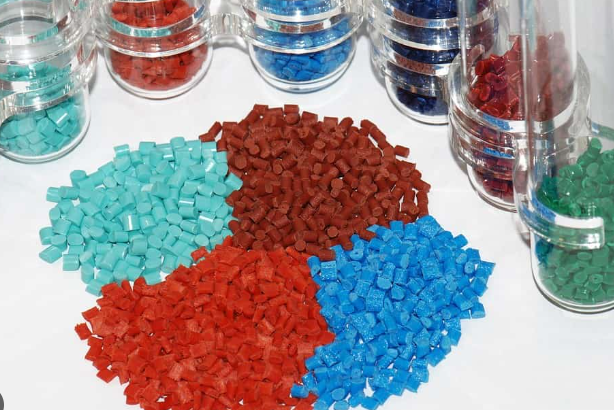When choosing materials for injection molding, consider strength, cost, durability, flexibility, and intended application.

Understanding the Basics of Plastic Materials
In the realm of injection molding, understanding the different types of plastic materials and their properties is crucial for achieving desired outcomes. Each type of plastic offers a unique set of characteristics that influence the quality, functionality, and sustainability of the final product.
Types of Plastics Used in Injection Molding
Plastic materials primarily fall into two broad categories: thermoplastics and thermosetting plastics. However, within these categories, several specific types of plastics are commonly used in injection molding.
- ABS (Acrylonitrile Butadiene Styrene): Known for its toughness and impact resistance, ABS is often the go-to material for automotive components, consumer goods, and electronic housings. Its strength and affordability make it a preferred choice for many applications. (ABS Wikipedia)
- Polyethylene (PE): With its high ductility and low cost, PE is widely used for containers, piping, and plastic bags. Its variants, like High-Density Polyethylene (HDPE), offer additional characteristics like rigidity and chemical resistance.
- Polypropylene (PP): Valued for its flexibility, chemical resistance, and fatigue resistance, PP is often used in automotive parts, packaging, and living hinges. It stands out for maintaining its properties across a range of temperatures.
Thermoplastics vs. Thermosetting Plastics
Thermoplastics and thermosetting plastics differ significantly in their behaviors and uses.
- Thermoplastics:
- Properties: These plastics become moldable upon heating and solidify when cooled. Crucially, this process is reversible, meaning they can be remelted and remolded without altering their chemical structure.
- Advantages: Thermoplastics are generally easier to work with in terms of molding and recycling. Their ability to be reshaped multiple times without degradation is a significant advantage.
- Cost: The cost of thermoplastics varies, but generally, they are more cost-effective due to their recyclability and ease of processing. For instance, the price of ABS ranges between $1.50 to $3.00 per pound, depending on quality and quantity purchased.
- Thermosetting Plastics:
- Properties: Once heated and set, these plastics cannot be remelted. Their molecular structure changes during the initial process, becoming cross-linked and rigid.
- Advantages: These materials are typically stronger than thermoplastics and are more resistant to high temperatures and chemicals. They are ideal for high-heat applications like electronic and automotive components.
- Cost: While thermosetting plastics can be more expensive due to their robust properties and the complexities involved in processing, the overall cost must be evaluated in terms of performance and longevity. For example, epoxy resins, a type of thermoset, can cost around $5 to $15 per pound.
Factors Influencing Material Selection
Selecting the right material for injection molding is a complex decision that involves balancing various factors to ensure the final product meets all requirements. Material choice affects not just the product’s performance and durability, but also the cost-effectiveness and efficiency of the manufacturing process.
Material Properties and Their Relevance
The properties of materials play a pivotal role in determining their suitability for specific applications.
- Strength and Toughness: The strength of a material, such as tensile strength (the resistance to being pulled apart), directly influences its ability to withstand mechanical stress. For instance, polycarbonate, known for its high tensile strength, is ideal for products subjected to impact or stress.
- Heat Resistance: The ability of a material to withstand high temperatures without degrading is crucial for products used in high-temperature environments. Thermosetting plastics, like phenolic resins, offer excellent heat resistance.
- Flexibility and Rigidity: Depending on the application, a material’s flexibility (like that of low-density polyethylene) or rigidity (like that of polystyrene) can be crucial.
- Cost: Material cost is a major factor. For example, standard plastics like polypropylene can be significantly cheaper, costing around $0.50 to $1.50 per pound, whereas engineering plastics like PEEK can exceed $20 per pound.
Considering the End Product’s Application
The intended use of the product determines many requirements for the selected material.
- Safety and Compliance: Materials for medical devices or food containers, such as certain grades of HDPE, must meet stringent safety and quality regulations.
- Aesthetic Requirements: For products where appearance is key, materials with good color stability and surface finish, like ABS, are preferable.
- Functionality: For gears and bearings, materials must possess excellent wear resistance and low friction coefficients.
Environmental Conditions and Material Performance
The performance of a material under various environmental conditions is critical.
- Chemical Exposure: Resistance to chemicals is vital for materials used in harsh environments. PVC, for example, offers superior resistance to acids and alkalis.
- Weather and UV Resistance: For outdoor applications, materials need to withstand elements like UV rays and rain. Acrylics and certain grades of polyethylene are chosen for their UV resistance.
- Biodegradability: In applications demanding environmental sustainability, biodegradable plastics like PLA (Polylactic Acid Wikipedia) are increasingly popular.
Material Properties Critical to Injection Molding
The success of an injection molding project heavily depends on the choice of material and its properties. Each property impacts not only the processability of the plastic during molding but also the performance and longevity of the final product.
Strength and Durability
Strength and durability are key characteristics that determine how well a product can withstand physical forces without degrading or failing.
- Tensile Strength: This reflects the material’s ability to resist pulling forces. High tensile strength materials like Nylon, which can have tensile strengths as high as 12,000 psi, are suitable for load-bearing applications.
- Impact Resistance: Important for products that must endure bumps and drops, materials like Polycarbonate, offering impact strengths of up to 16 ft-lb/in in notch Izod tests, are ideal.
- Wear Resistance: Essential for parts with moving components, materials like UHMW PE, known for exceptional wear resistance, ensure longevity and consistent performance.
Heat Resistance
The ability of a material to maintain its properties at elevated temperatures is crucial in many applications.
- Maximum Service Temperature: Materials like PEEK, which can withstand temperatures up to 482°F (250°C), are suitable for high-heat environments.
- Thermal Expansion: Low thermal expansion rates are essential for dimensional stability. Materials like Glass-Filled Nylon have lower thermal expansion rates, ensuring stability across temperature changes.
Chemical Resistance
Chemical resistance determines a material’s suitability in environments exposed to corrosive substances.
- Resistance to Acids/Bases: Certain plastics like PVDF resist acids and alkalis, making them suitable for chemical handling applications.
- Solvent Resistance: Materials like PPS, which resist a wide range of solvents, are crucial in chemical and automotive industries.
Flexibility and Rigidity
The degree of flexibility or rigidity dictates a material’s usage in applications requiring specific movement characteristics or structural stability.
- Flexural Modulus: High flexural modulus materials like ABS, which can have moduli around 310,000 psi, provide rigidity necessary for structural components.
- Elongation at Break: Materials with high elongation rates, like LDPE, which can elongate up to 600%, offer the flexibility needed for products like squeeze bottles.

Cost Considerations and Material Efficiency
In injection molding, the careful consideration of costs and material efficiency plays a pivotal role in ensuring the economic viability and success of a project. These factors directly impact the overall budget, product pricing, and profit margins.
Balancing Cost and Performance
Finding the right balance between cost and performance is crucial for the sustainability of any injection molding project.
- Material Selection: Choosing a material that offers the necessary performance at the lowest possible cost is key. For instance, while PEEK offers exceptional properties, its high cost (potentially over $20 per pound) might not be justifiable for all applications, compared to more affordable options like ABS, which might cost only $1.50 to $3.00 per pound.
- Lifecycle Costs: Consider the total lifecycle cost of the product, including longevity, maintenance, and the potential for recycling. Materials with longer lifespans and lower maintenance requirements might offer more value over time, despite higher initial costs.
Understanding Material Costs
Material costs can vary significantly and are influenced by various factors.
- Commodity vs. Engineering Plastics: Commodity plastics like PE and PP are generally cheaper (around $0.50 to $1.50 per pound) compared to engineering plastics like Polycarbonate or Nylon.
- Market Fluctuations: Prices of plastics are subject to market fluctuations influenced by oil prices, supply-chain dynamics, and global demand.
- Bulk Purchasing: Larger volume purchases typically reduce material cost per unit, offering economies of scale.
Minimizing Waste in Injection Molding
Efficient use of materials is not only cost-effective but also environmentally responsible.
- Optimizing Design: Streamlining part design can reduce material usage without compromising quality. For example, using rib structures for strength instead of solid sections can significantly cut down material usage.
- Recycling Sprues and Runners: Reusing the plastic waste produced during the molding process, like sprues and runners, can lead to significant material savings.
- Advanced Molding Techniques: Technologies like hot runner systems and co-injection molding can enhance material efficiency by minimizing waste.
Advanced Materials and Specialty Plastics
In the realm of injection molding, advanced materials and specialty plastics are paving the way for innovations in various industries, ranging from aerospace to biomedicine. These materials often offer enhanced properties like higher strength, improved thermal stability, and better environmental sustainability.
High-Performance Polymers
High-performance polymers are engineered for demanding applications that require exceptional mechanical, thermal, and chemical properties.
- PEEK (Polyether Ether Ketone): Known for its high heat resistance (up to 482°F or 250°C), excellent chemical resistance, and superior mechanical properties. PEEK is a prime choice in aerospace, automotive, and medical industries, despite its higher cost, potentially exceeding $20 per pound.
- PSU (Polysulfone): Offers excellent thermal stability (usable up to 300°F or 149°C) and good chemical resistance, ideal for medical and pharmaceutical applications. Its transparency and ability to be sterilized are additional benefits.
- LCP (Liquid Crystal Polymers): These polymers display high flow characteristics, making them suitable for thin-wall applications in electrical and electronic components. They maintain their properties at very high temperatures and are inherently flame retardant.
Bioplastics and Sustainable Materials
Sustainable materials, particularly bioplastics, are gaining traction as environmentally friendly alternatives to traditional plastics.
- PLA (Polylactic Acid): Derived from renewable resources like corn starch, PLA is biodegradable and compostable under industrial conditions. It’s used in packaging, disposable tableware, and 3D printing. However, its properties like lower heat resistance limit its application range.
- PHA (Polyhydroxyalkanoates): Produced by microorganisms, PHA is biodegradable and useful in medical applications like sutures and tissue engineering. It offers good biocompatibility but often comes at a higher price point than conventional plastics.
- Bio-PET: Bio-based PET has similar properties to traditional PET but is partially made from renewable materials like sugarcane. It’s used in packaging and bottling, combining the benefits of PET with a reduced carbon footprint.
Innovations in Material Science for Injection Molding
Continuous advancements in material science are leading to new materials that can open up unexplored applications.
- Self-Healing Polymers: These materials can repair themselves after damage, potentially increasing the lifespan and durability of products.
- Conductive Polymers: Used in electronics for anti-static components, shielding, and flexible electronics, conductive polymers blend plastic properties with electrical conductivity.
- Nanocomposites: Incorporating nanoparticles can enhance material properties like strength, thermal stability, or electrical conductivity. They are finding uses in automotive, aerospace, and electronic sectors.

Testing and Prototyping with Materials
In the field of injection molding, testing and prototyping play critical roles in ensuring that the chosen material meets the required specifications and performance criteria. These processes help in validating material characteristics, assessing feasibility, and minimizing the risk of failures in real-world applications.
Importance of Material Testing
Material testing is an integral step in the injection molding process, providing valuable data on the properties and behavior of plastics under various conditions.
- Mechanical Testing: Determines the strength, flexibility, and durability of materials. Tensile, impact, and fatigue tests give insights into how a material behaves under stress, which is crucial for applications in high-stress environments.
- Thermal Testing: Assesses how materials perform under different temperatures. Tests like Differential Scanning Calorimetry (DSC) and Thermogravimetric Analysis (TGA) provide data on melting points, decomposition temperatures, and thermal stability.
- Chemical Resistance Testing: Ensures that materials can withstand exposure to chemicals or corrosive environments. This testing is vital in industries like chemical processing and medical devices.
Rapid Prototyping and Material Selection
Rapid prototyping, including 3D printing, enables quick, cost-effective creation of parts for testing material properties and design concepts.
- Speed and Flexibility: Prototyping allows for fast iteration and optimization of designs, material choices, and manufacturing processes. Changes in designs or materials can be tested without the need for expensive tooling.
- Material Simulations: Advanced software can simulate how different materials will behave in a given design, helping in preliminary material selection before physical testing.
- 3D Printed Prototypes: Utilizing 3D printing for prototyping can provide an accurate representation of how different materials will perform, particularly useful for testing complex geometries or new material blends.
Case Studies: Material Testing in Real-World Applications
Real-world case studies highlight the significance of material testing in achieving desired outcomes and preventing failures.
- Automotive Industry: In automotive applications, where safety and durability are paramount, materials undergo rigorous testing. For example, a bumper made from an impact-resistant polymer must pass crash tests to ensure it meets safety standards.
- Medical Devices: In a case study involving a surgical instrument made from PEEK, material testing validated its strength, rigidity, and sterilization compatibility, ensuring the instrument’s reliability and safety in medical procedures.
- Aerospace Components: For an aerospace component, materials not only need to withstand extreme temperatures and pressures but also comply with industry-specific standards. Extensive testing ensures that materials like high-performance thermoplastics can endure the harsh conditions of aerospace environments.




